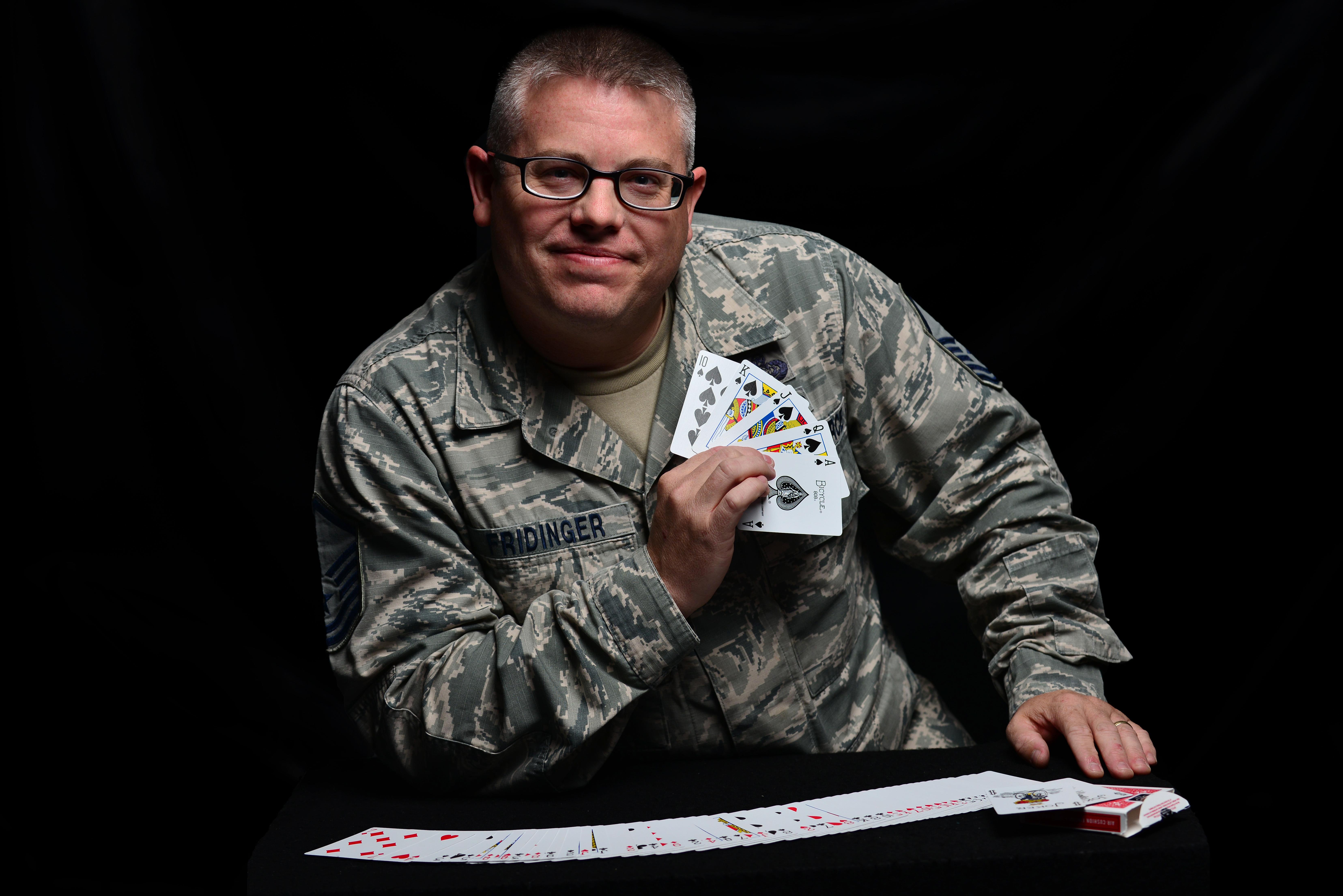By Air Force Senior Airman Aubrey White, Joint Base
Langley-Eustis DoD News Features, Defense Media Activity
LANGLEY AIR FORCE BASE, Va., November 25, 2015 — From a
distance, Air Force Master Sgt. Scott Fridinger, the first sergeant for the Air
Combat Command Communications Support Squadron, looks like any other senior
noncommissioned officer; his uniform is in order, military-issued silver
glasses frame his eyes, his hair trimmed with precision.
But what makes Fridinger unique is what he carries in his
briefcase and how he uses its contents to connect with those he encounters
every day.
“I can’t sing, I have no rhythm, I have no musical talent --
no talents whatsoever, so why not do magic?” Fridinger joked. “When you do the
tricks people always say, ‘How do you do that?’ But you don’t really want to
know because it ruins it.”
Fridinger began practicing magic after a high school trip to
New York where he visited a magic shop. It wasn’t until he spent years
polishing his craft, and with a lot of encouragement from his wife, that he
thought of expanding his audience.
“When I met [my wife] I had a briefcase full of card tricks
and she was like, ‘Why don’t you do more with that?’” Fridinger recalled. “Now
I have a room full of magic tricks. I have magic stuff in my car; I’m always
prepared to do something.”
Reaching Airmen
When he’s not teaching magic classes to children or
entertaining his own four children, Fridinger said his magic also allows him to
reach his airmen from a different angle.
“Most of them love it,” he said of his coworkers. “I would
love to see all the [senior noncommissioned officers] do an open show for the
airmen in the dorms. From my perspective, magic builds that personable authority
where they trust you and they like you so they want to come to you with their
problems. The airmen will see their leaders as people.”
According to Fridinger, not all of his tricks are for simple
amusement. He also performs magic with specific messages geared toward
enhancing the pillars of Comprehensive Airman Fitness and the Air Force core
values.
“Depending on how far you want to go, I have stuff that has
built-in messages. I gave one to an Air Force recruiter that he could do when
he’s meeting people,” he explained. “I’m not a gospel magician, but I try to do
stuff that has a message at the beginning and a message at the end so it’s not
just entertainment.”
During one of his squadron Comprehensive Airmen Fitness
days, Fridinger visited the Hampton, Virginia, Veterans Affairs Hospital and
entertained veterans suffering from a variety of ailments. The magician said he
believes it’s important to give back to the community that has given so much to
him.
“If you have something you really love and enjoy, find a way
to give it back to the community,” Fridinger said. “It’s not just good for
them; it’s good for you too.”









